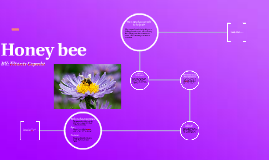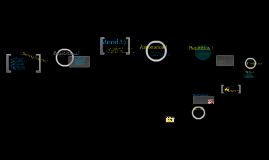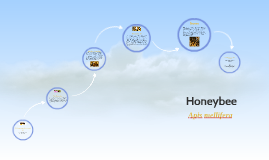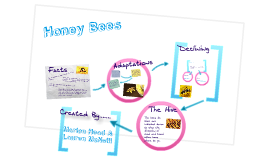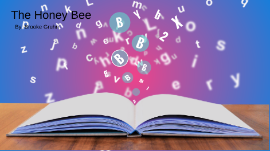Honey Bee
Transcript: Honey Bees Facts The honey bee has been around for millions of years. Honey bees, scientifically also known as Apis mellifera, are environmentally friendly and are vital as pollinators. It is the only insect that produces food eaten by man. Honey bees have 6 legs, 2 compound eyes made up of thousands of tiny lenses (one on each side of the head), 3 simple eyes on the top of the head, 2 pairs of wings, a nectar pouch, and a stomach. Adaptations Declining The Hive The bees do their own individual dance to show the direction of food and teach other bees where to go. Created By....... Marion Head & Lauren McNeill (cc) photo by Franco Folini on Flickr Honey bee workers forage for nectar and pollen to feed the colony. They collect pollen in special baskets on their hind legs, called corbicula. The hair on their bodies is charged with static electricity, which attracts pollen grains. The nectar is refined into honey, which is stored for times when nectar may be in short supply. (cc) photo by Metro Centric on Flickr Honey bees have a sophisticated method of communication. Pheremones signal when the hive in under attack, help the queen find mates, and orient the foraging bees so they can return to their hive. The waggle dance, an elaborate series of movements by a worker bee, informs other bees where the best sources of food are located. Worker bees sting with a modified ovipositor on the end of the abdomen. The barbed stinger and attached venom sac pull free from the bee’s body when the bee stings a human or other target. The venom sac has muscles that continue to contract and deliver venom after it is detached from the bee. If the hive is threatened, the bees will swarm and attack to protect it. Male drones do not have a stinger. Parasites Pesticides Disease (cc) photo by Metro Centric on Flickr Infest the bees and the hive which can carry disease (cc) photo by jimmyharris on Flickr They kill bees or make them very ill. They are genetically identical so if one bee dies because of disease then they all die.






